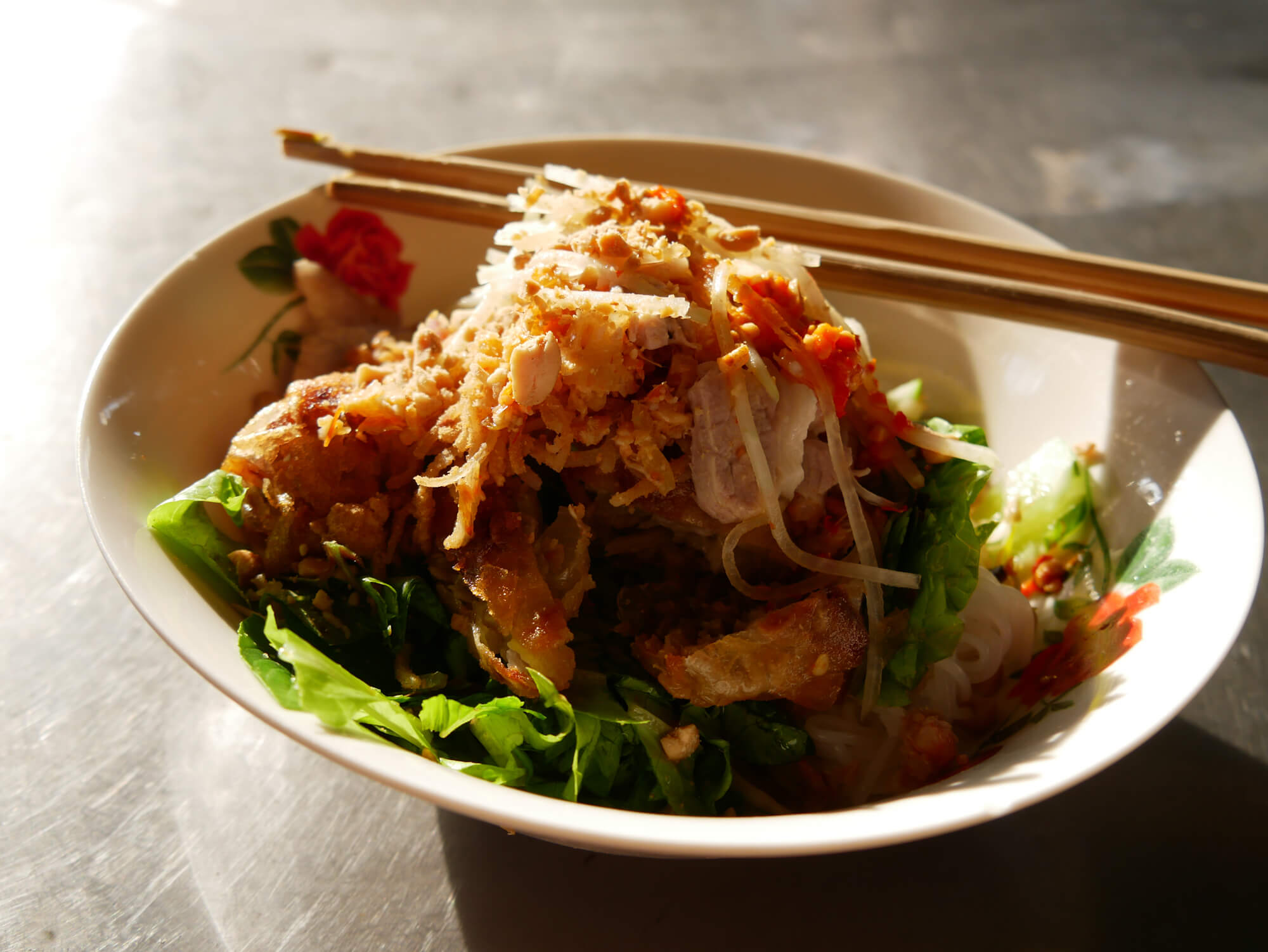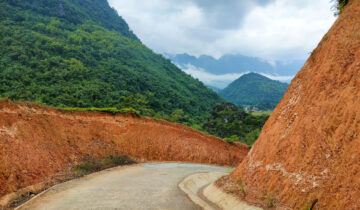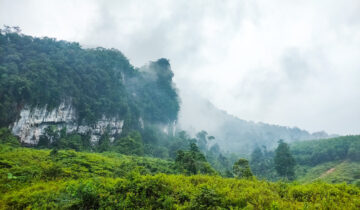Mangroves, fruit trees and shady canals and quaint wooden bridges – these are the things which spring to my mind when asked about the quintessential Mekong Delta.
But there’s another side to this vast region too, one of endless carpets of emerald green rice fields fringed with craggy mountains, and wide flowing rivers.
Day 1 of my do-it-yourself bike trip takes you through exactly this kind of landscape. It hug the Cambodian border for around 60 kilometres, travelling inland from the sea.
This is hybrid-Vietnam, a land with one foot in Cambodia. Much of the population here still identifies as Khmer despite having lived most or all of their lives in Vietnamese territory.
Perhaps that’s why the voices, music, houses here seem so gentle and charming. The landscape is gentle too: there is plenty of green and the looming mountain range across the border is a constant presence.
Route Info
Day: one of a five or six day trip
Distance: 66 km
Terrain: Mostly good roads and flat terrain
Good to know: Be prepared for one one or two slightly monotonous stretches on what is otherwise a great ride. Consider booking in advance if staying in Ba Chuc as only a couple of guesthouses are registered to take foreigners.
Map
Borderlands: another side to the Mekong Delta
At around 66 kilometres, this leg of my Delta cycling tour is the longest, but also one of the most straightforward, largely following a minor highway. It should be easy enough to cover ground quickly here, but as always don’t underestimate the heat.
There’s also a glorious detour along the Giang Thanh River – a little short and sweet but exactly the sort of back road that makes cycling so enjoyable in this part of the world.
If you’re short on time, the town of Chau Doc would make another good starting point, that would also allow you to spend three to four days deep in classic Mekong Delta environments.
However, if you do have a couple more days up your sleeve, the coastal town of Ha Tien makes a far better kick-off point.
Heading out of Ha Tien
Leaving as early as possible in the morning, and tackle the first long, straight stretch of QLN1 while the air is cool and fresh.
But first, (especially if you took a day or two to get to know Ha Tien) take a moment to pause and look back.
A good place to do this is just before the turn-off on to QLN1. There’s a small patch of beach where you can admire the view back across the water to Ha Tien. It’s a reminder of how pretty this piece of coastline is.
Another is from this bridge, which crosses a long, straight canal that allows river traffic all the way from Rach Gia, a provincial capital 90 km away.
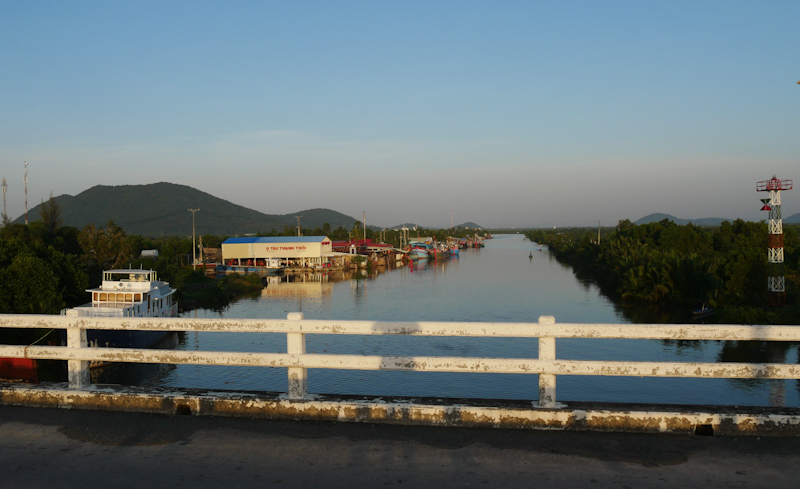
Nui Nhon detour
If you are up early, and not daunted by the 60 plus kilometres ahead, consider a sunrise detour, head up the road that skirts. You’ll be rewarded with rich, lush old growth vegetation and views across wetlands, maybe even as the sun rises. It’s very peaceful and probably the best place ever to eat a takeaway breakfast bague banh my. Just a thought.
From the turnoff, it’s a long, straight 15 km run straight up QL15 to Ca Ngay, where my route diverges from the main road.
While there are a few lorries and large vehicles about, the traffic is not too bad at all – look out for rough and ready roadside stops to grab a refreshing iced coffee or get a tyre pump.
Giang Thanh River path
Without a doubt the highlight of this day’s ride is the next 15 kilometre stretch, which meanders alongside the Giang Thanh River before it flows on into Cambodia.
First though, a small, quiet road takes you through a sea of rice fields, broken only by groves of trees and family shrines. Apart from the odd farmer and travelling vendor, you’re unlikely to see a whole lot of traffic.
Visit in the right season (I was there in December), and the vista is almost impossible green.
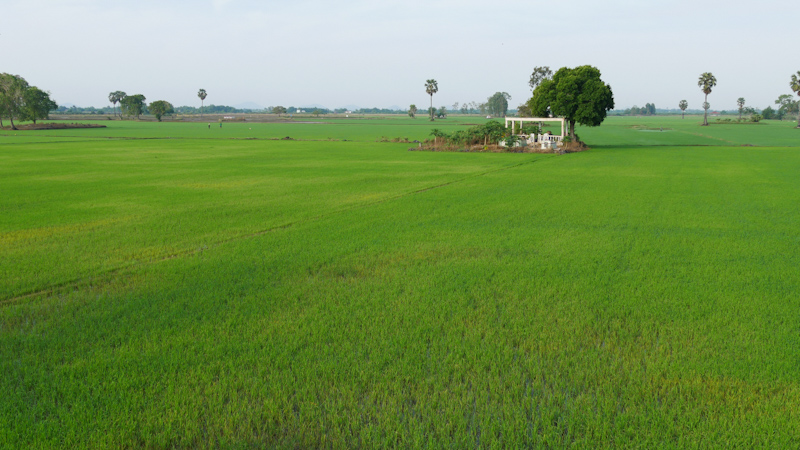
When the path meets the river, the scenery is pure bliss, with lovely trees and views across to Cambodia.
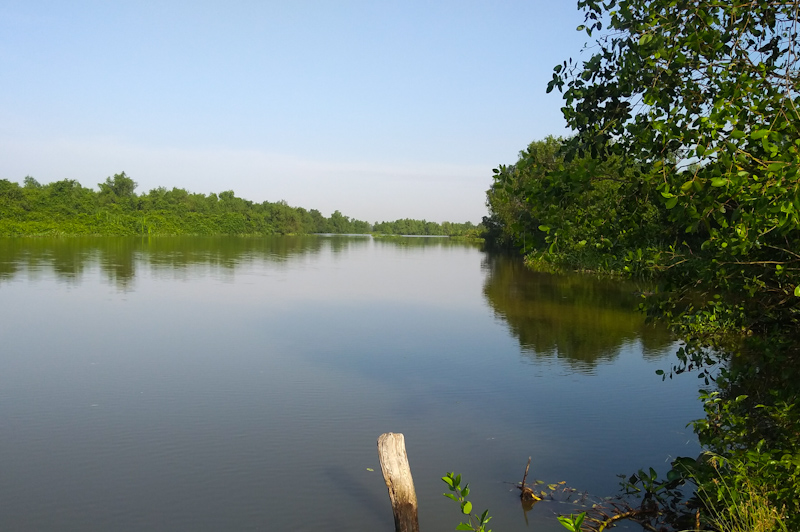
Take it slow and soak in the river life before making a stop in tiny Hoa Khanh, a tiny flower filled hamlet which is so idyllic it scarcely seems real
Right on the riverfront, you’ll find a very pleasant café in the front yard of a pretty wooden house – it’s the perfect place to rest and recharge with an icy sugarcane juice (nuoc mia)en.
With high concentration of calcium, magnesium and potassium, Sugarcane juice is nature’s sports drink; pedalling through in the steamy Delta climate I found it to be indispensable.
While all the street food had shut down for the mid-morning lull, the proprietress went to great pains to order me in a ‘second breakfast’ of local noodle soup (Hu Tieu). After about 15 minutes a young guy appears on a moped, balancing the steaming bowl in one hand.
Heading out from the village the road says goodbye to the river and continues along a canal before eventually (sadly) merging back with QLN1.
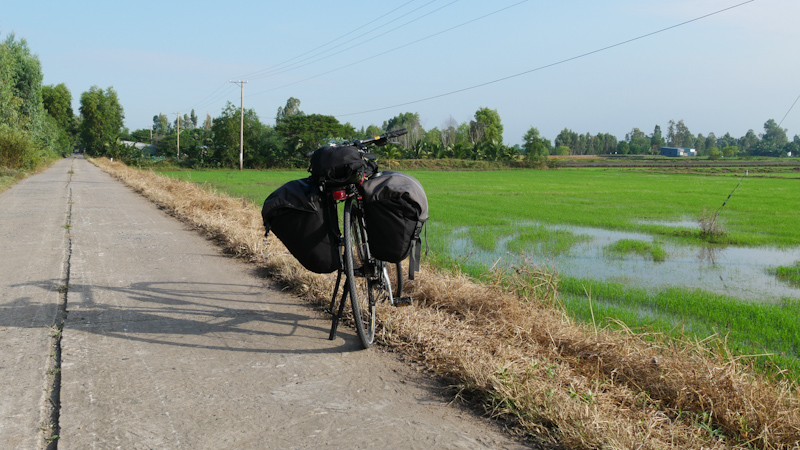
Highway to Ba Chuc
A long, straight, 26 kilometre stretch lies between the junction and the Ba Chuc turn-off, heading almost exactly due east along the canal.
The sights, sounds and smells of agriculture and simple rural life, are everywhere, and every so often an impossibly steep bridge heralds another entry point into Cambodia (for locals, at least).
Although this section is a little long and monotonous, the road’s in good condition and there’s almost always something to look at: from interesting houses and shops to enormous barges to people just going about their business.
If you have time, and the season is right, a quick diversion into the village back roads will yield a break from the highway and more sweeping views across carpets of green.
Otherwise a range of distant mountains across in Cambodia provide some diverting scenery.
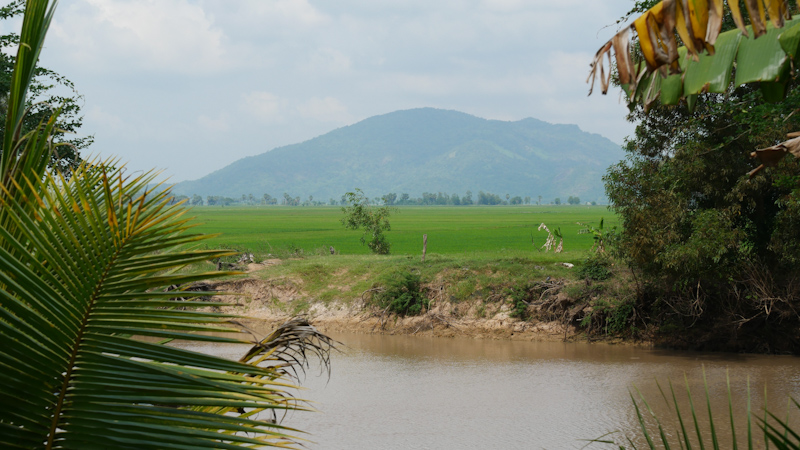
The turn-off to Ba Chuc can be found just after the administrative centre of Lac Quoi, unremarkable apart from another rather impressive bridge.
If you have the energy at this point, a small road just before the turn off takes you deep into rice fields and bright red chilli crops, and gives you excellent views across rice fields and chilli crops to the Nui Nuoc hills.
This is countryside Vietnam at its best, though it’s a shame this pleasant little road doesn’t cut directly across to Ba Chuc – you’ll need to backtrack.
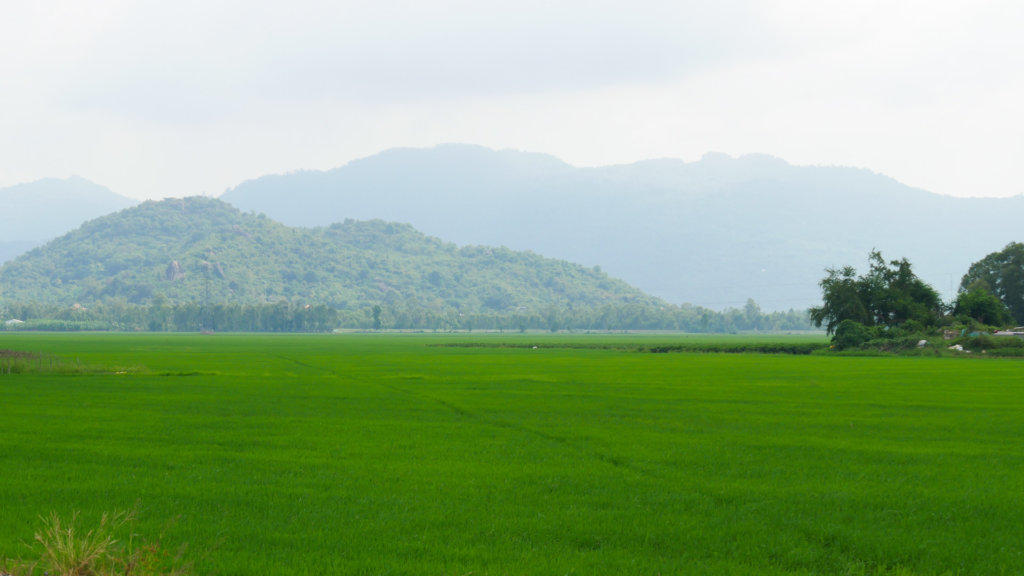
Read also:
Guide to staying and eating in Ba Chuc


